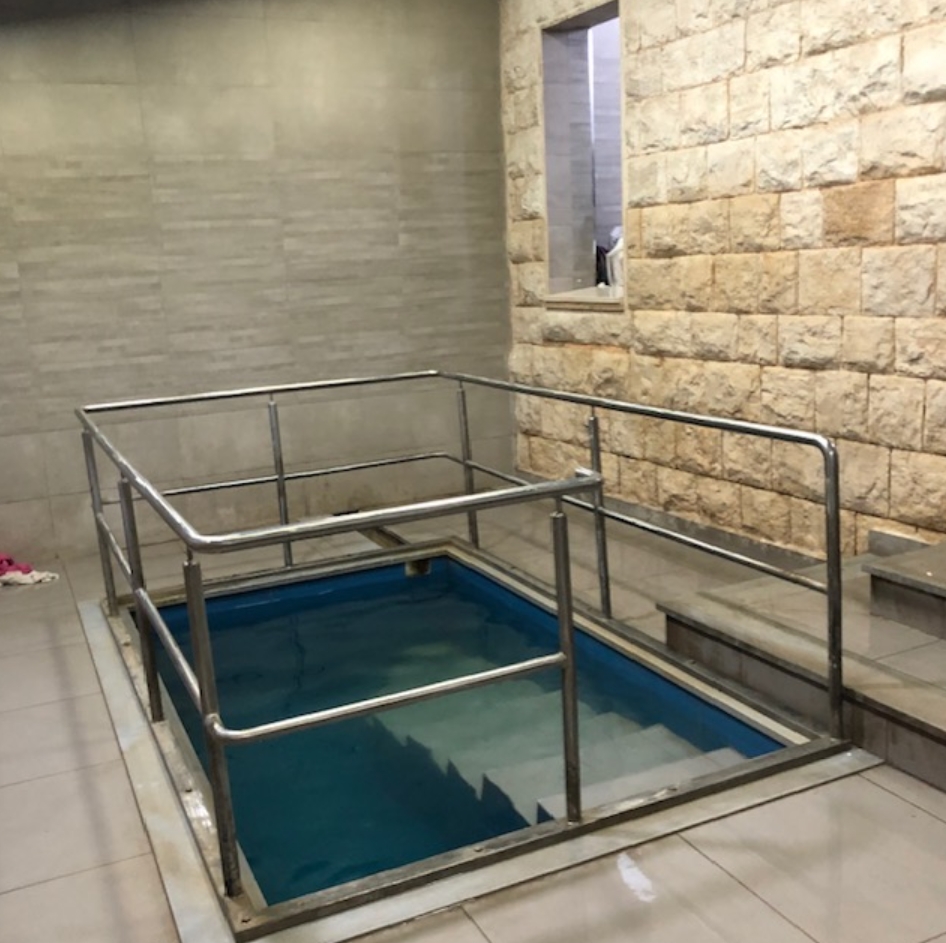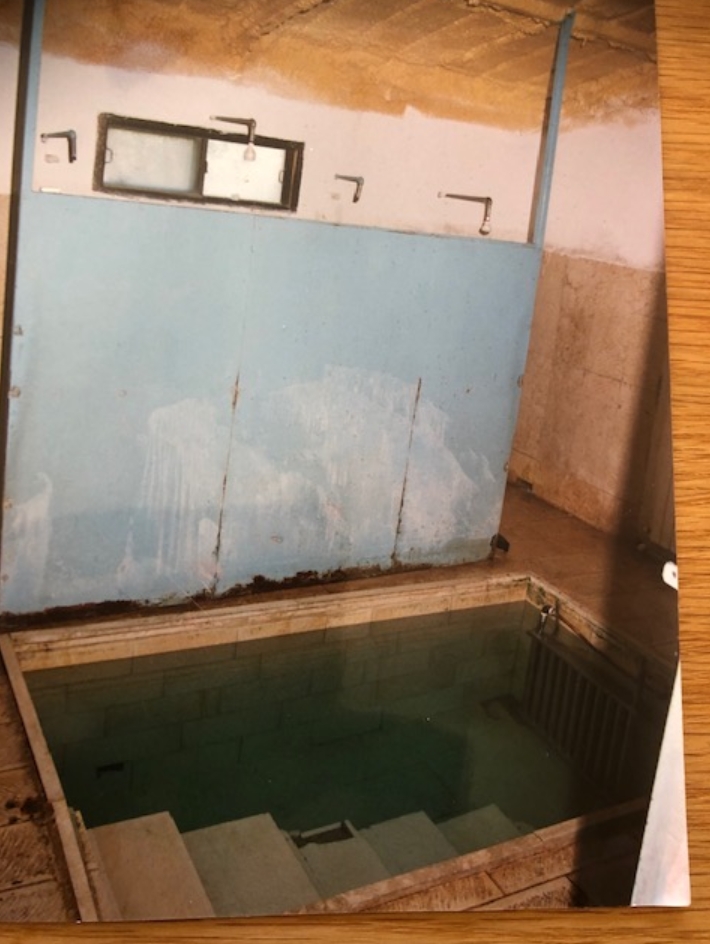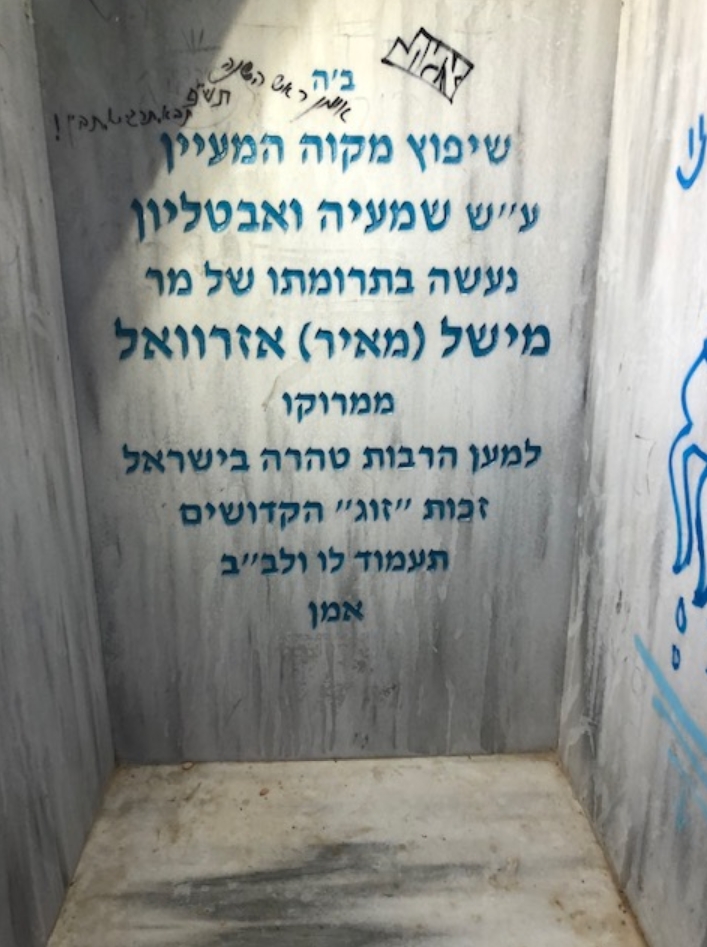Former Knesset Member, Farmer, and Mikvah Manager: The Unfamiliar Story of Dani Saida
After leaving the Knesset, Dani Saida returned to his agricultural work in Safsufa and invested in the unique mikvah he established there - 'Mikvah Shemaya and Avtalyon'. What are the wonders seen there?

His name is Dani Saida. You might be surprised to hear that until four months ago, he was a Knesset member representing the Shas movement. His first term in the Knesset was the shortest—one day, three hours, and 35 minutes. After that came his second term, which was slightly longer.
"I arrived in the Knesset at an older age, which was difficult for someone my age," he honestly tells me, noting that he preferred continuing his work as a farmer with his vineyards and chicken coops in Safsufa, near Meron.
However, his energy and activism didn't leave him, and he decided to bring change to the north. Saida decided, together with his friends, that the spring emerging within the orchards, watering fields and fish ponds, could be used for a much more significant purpose. It deserves to be a 'dipping pit', what we call a 'mikvah'.
The Price of a Slush
When did you discover the mikvah?
"As I mentioned, I am a farmer by birth, and as the owner of plum and apple orchards, I used the spring water within them to irrigate the orchards. One day, about thirty years ago, I told my friends and the village rabbi that these waters are actually spring water, living water, so why shouldn't we immerse in it? And indeed, that's what we did. Gradually, the word about the spring where you could immerse spread, and many started to come. This was precisely during the great wave of return to faith that swept the country, and we realized it wasn't fitting or respectable for people to enter muddy pits infested with snakes underground. So we decided something had to be done to build the site. I separated and fenced off the area from my orchards, and we dedicated the plot for this purpose, and thus, with Hashem's blessing, a mikvah was established, which over the years grew and became spacious and accessible to all, and a heated dipping pit was also added, which too is living spring water."

The cost of renovating and building a mikvah is not trivial. Who helped you finance the costs?
"Initially, I covered the costs from my own pocket; then my brother joined me, wanting to be a partner for the healing of his son who was then ill. Later, many kind people joined, including residents of the village and synagogue members, together with the rabbi at the time, Rabbi David Lakhiani. Everyone contributed their wealth and effort for the development and expansion of the place.
"About two years ago, we conducted the grand and luxurious renovation that is present today, through Michel Azourel, a precious Jew from Morocco. Initially, he renovated the holy site of the Tannaim Shemaya and Avtalyon, buried in Gush Halav nearby us, and afterwards, he decided to take on most of the costs for the mikvah renovation. This added the special beauty and splendor to the place, as an integral part of the aesthetics and cleanliness of the showers and dipping pits. Thanks to his generous heart, the people of Israel enjoy pure immersion, almost for no cost."

How much does immersion cost?
"Immersion in the mikvah costs like a cup of slush, only two shekels, which is the cheapest price in the country, and even that is not mandatory. It's a suggestion and a privilege to be a partner in maintaining the place. There is no guard outside, no gate and no limit, just a box at the entrance, and whoever's heart is moved gives according to their ability. Thus, no Jew is hindered from coming to the place, day and night, on Shabbat and holidays, twenty-four hours a day, seven days a week."

Before Striking Hezbollah
Can you tell our readers why you call the mikvah 'The Mikvah of Shemaya and Avtalyon'?
"The reason is that the site of the Tannaim is half a kilometer away, in the village Gush Halav, near Safsufa. Since I renovated the place with my friends, the people of Israel come in masses, day and night, and you can see religious, traditional, and secular people here, on their way to the tomb of Rabbi Shimon bar Yochai and the graves of the righteous in the Galilee, coming to purify themselves in the mikvah."
But anyone already coming to the north wanting to immerse in a mikvah might prefer going to the Ari Mikvah, not far from here. Additionally, there's the promise of the Ari that anyone who immerses in his mikvah will not leave this world without repentance. Surely you don't give such promises. Why do people prefer your mikvah, or as you call it, the Shemaya and Avtalyon Mikvah?
"Heaven forbid, there was no intention to compete with any mikvah and certainly not with the Ari Mikvah. But what distinguishes our mikvah is accessibility. The accessibility to the Shemaya and Avtalyon Mikvah is entirely different from that of the Ari Mikvah or any other spring mikvah. Here, you can drive to the mikvah, almost dip the wheels in the water, unlike the Ari Mikvah where you have to descend stairs down the mountain. For someone who frequently immerses in a mikvah, this is very significant, and that's what makes the difference."

What was the most special occurrence at the mikvah?
"During the Second Lebanon War, there was a kind of trend where soldiers would come to immerse in the mikvah before entering combat in Lebanon. It was very moving to see our sons, our children, our soldiers also engaging in purifying themselves in times of stress and distress."
Which spiritual figure gave their support to the place?
"The first to encourage and come to the site and even push for building and renovating was Rabbi Mordechai Eliyahu, may his memory be blessed. Furthermore, a strong presence was maintained by the divine Kabbalist, the wise Chacham Yahya Shneor, may his memory be blessed, the companion of Rabbi Meir Abuhatzeira—Baba Meir, and he was sheltered under the Baba Sali. He came several times in the first years of establishing the mikvah, to immerse there. On a halachic level, Rabbi Rata from the United States, who ruled on the halachic issues in the establishment, accompanied us. Today, I consult with Rabbi Shlomo Amar, the Chief Rabbi of Jerusalem, on all halachic matters and needed regulations at the site."
In conclusion, do you have a special miracle story about the mikvah you built in the north?
"You probably want me to tell you that one day a viper came out of the mikvah and scared away a suicide bomber, who, in his terror, had his bomb explode on him, but no. There are no miracles and wondrous acts at this place, in my opinion, the greatest miracle of the place is the number of people who come to immerse—twenty-four hours a day, seven days a week, all year long, thousands upon thousands of your people, the house of Israel. In my eyes, this is the true miracle of the mikvah."

